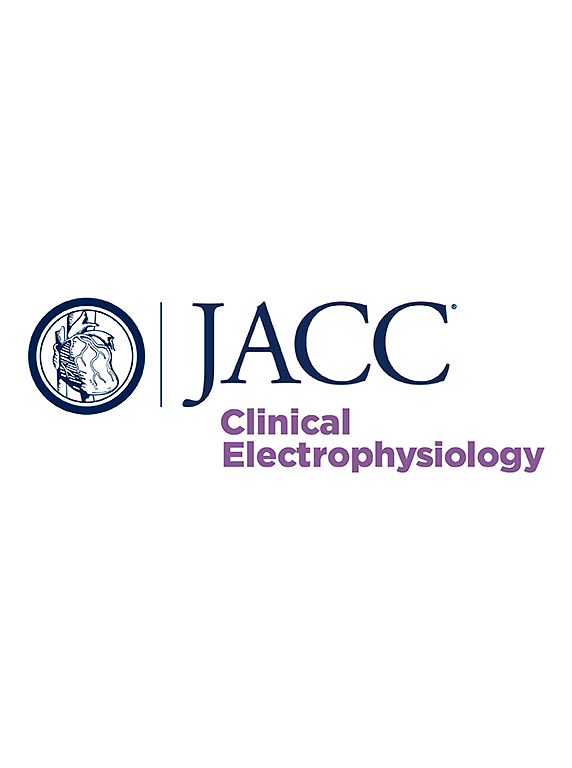Quantifying DNA Lesions and Circulating Free DNA
IF 8
1区 医学
Q1 CARDIAC & CARDIOVASCULAR SYSTEMS
引用次数: 0
Abstract
Background
Atrial fibrillation (AF) persistence is associated with molecular remodeling that fuels electrical conduction abnormalities in atrial tissue. Previous research revealed DNA damage as a molecular driver of AF.
Objectives
This study sought to explore the diagnostic value of DNA damage in atrial tissue and blood samples as an indicator of the prevalence of electrical conduction abnormalities and stage of AF.
Methods
High-sensitivity long-run real-time PCR was performed on mitochondrial (ND1) and nuclear (P53) DNA from atrial tissue samples from paroxysmal (PAF), persistent (PeAF), and longstanding persistent (LS-PeAF) AF, and sinus rhythm (SR) patients (n = 83). PicoGreen assay and quantitative polymerase chain reaction were used on circulating free DNA (cfDNA) markers (total cfDNA, β-globin, ND1, and P53) in blood samples of 70 patients with AF or SR. High-resolution epicardial mapping of the atria (n = 48) was conducted to quantify electrical conduction abnormalities.
Results
The number of DNA lesions gradually and significantly increased in PAF and PeAF and in patients with <3 years of AF compared with SR. In SR, the quantity of nuclear DNA damage significantly correlated with the proportion of fractionated potentials. Mitochondrial DNA lesions correlated with slower conduction velocity and lower potential amplitudes in AF samples. Also, mitochondrial cfDNA levels decreased in patients with >3 years of AF compared with <3 years of AF (P = 0.004).
Conclusions
The quantity of DNA lesions in atrial tissue samples is associated with atrial conduction abnormalities and stage of AF. Serum DNA damage markers discriminate short- from long-term AF. Therefore, the quantity of DNA damage may have diagnostic value in clinical AF management.
定量DNA病变和循环游离DNA:心房颤动电病理和临床分期的诊断标志。
背景:房颤(AF)的持续存在与分子重塑有关,而分子重塑会导致心房组织的电传导异常。目的:探讨心房组织及血液DNA损伤作为心房电传导异常发生率及心房房颤分期指标的诊断价值。对阵发性(PAF)、持续性(PeAF)和长期持续性(LS-PeAF)房颤和窦性心律(SR)患者(n = 83)心房组织样本的线粒体(ND1)和核(P53) DNA进行高灵敏度长期实时PCR检测。采用PicoGreen法和定量聚合酶链反应对70例房颤或sr患者血液样本中的循环游离DNA (cfDNA)标记物(总cfDNA、β-珠蛋白、ND1和P53)进行检测。采用高分辨率心外膜心房作图(n = 48)量化心房电传导异常。结论:心房组织样本中DNA损伤的数量与心房传导异常和房颤分期有关,血清DNA损伤标志物可区分短期和长期房颤,因此DNA损伤的数量可能对临床房颤治疗有诊断价值。
本文章由计算机程序翻译,如有差异,请以英文原文为准。
求助全文
约1分钟内获得全文
求助全文
来源期刊

JACC. Clinical electrophysiology
CARDIAC & CARDIOVASCULAR SYSTEMS-
CiteScore
10.30
自引率
5.70%
发文量
250
期刊介绍:
JACC: Clinical Electrophysiology is one of a family of specialist journals launched by the renowned Journal of the American College of Cardiology (JACC). It encompasses all aspects of the epidemiology, pathogenesis, diagnosis and treatment of cardiac arrhythmias. Submissions of original research and state-of-the-art reviews from cardiology, cardiovascular surgery, neurology, outcomes research, and related fields are encouraged. Experimental and preclinical work that directly relates to diagnostic or therapeutic interventions are also encouraged. In general, case reports will not be considered for publication.
 求助内容:
求助内容: 应助结果提醒方式:
应助结果提醒方式:


